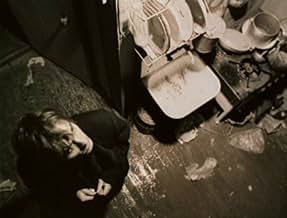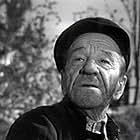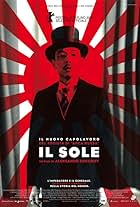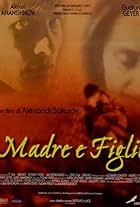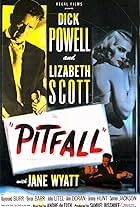VALUTAZIONE IMDb
7,1/10
795
LA TUA VALUTAZIONE
Aggiungi una trama nella tua linguaA man tries to come to terms with his father's death and to deal with the mundane details of his burial in a society cut off from spirituality.A man tries to come to terms with his father's death and to deal with the mundane details of his burial in a society cut off from spirituality.A man tries to come to terms with his father's death and to deal with the mundane details of his burial in a society cut off from spirituality.
- Premi
- 1 vittoria e 1 candidatura
Trama
Lo sapevi?
- ConnessioniFeatured in Sokurovin ääni (2014)
Recensione in evidenza
A mesmerizing, devastating study of grief, Sokurov's film definitely shows the influence of Tarkovsky, but Rembrandt's presence looms as well. The film is shot in EXTREME high contrast with colors so muted it often appears a bronzed black-and-white. People and surroundings just tenuously emerge into light suggesting the 'thinness" of everyday reality and the insubstantiality of life (images are given a two-dimensional quality) when we are suddenly placed in the omni-presence of death. As our experience of the stability and certainty of life is distanced so too our connection to its movement and flow is lost. Certainty of purpose and even of identity slip from our hands. We lose the "why" of any action. We are transfixed by inertia. This is transcendently illustrated in the scene where the young man stares into his dead father's eyes. Perhaps the character, while trying to incorporate the reality of this death, is also searching for who he NOW is since he is no longer the son of THIS man. What I am trying to say in more basic terms is that this film expresses the sense of everlasting loss and the sudden awareness of our own mortality and evanescence, brought on by a death of someone we love (or are tied to), in a more profound way than almost any work of art I have encountered.
As another commentator stated, the vision here is crystal clear. No action here SIGNIFIES anything else. Each is given its own substantive weight (how can a man folding up his dead father's bedding signify anything larger or more resonate than that experience itself, if it is presented in its fullness?). Sokurov's effort is to find the moments of immutable truth glimpsed within an ever-shifting human context and consciousness. His work is a lyrical extension of Tarkovsky's effort to capture elemental truths into by eliminating or minimizing context. Thus sound, in particular, is tightly controlled; limited solely to those effects which accent the character's (and our) experience. Idiosyncrasies of buildings and landscapes are virtually eliminated. Individual characteristics and peculiarities of personality are lost in the shadows. The effect is to give us the singular and universal experience of human grief and loss (if that makes any sense). It is interesting to note that the slightest play with the dream-scapes or grotesqueries that this situation could easily conjure would put us squarely in the land of David Lynch's ERASERHEAD, which this film resembles in the materials used its construction (photography, sound, pacing, etc.). Sokhurov, however, is more formally disciplined, and appears more focused on illuminating the waking truths that shape our dreams than animating the dream truths that color our consciousness.
Sorry about the purple (film school) prose but it's very difficult to discuss this film in other terms.
As another commentator stated, the vision here is crystal clear. No action here SIGNIFIES anything else. Each is given its own substantive weight (how can a man folding up his dead father's bedding signify anything larger or more resonate than that experience itself, if it is presented in its fullness?). Sokurov's effort is to find the moments of immutable truth glimpsed within an ever-shifting human context and consciousness. His work is a lyrical extension of Tarkovsky's effort to capture elemental truths into by eliminating or minimizing context. Thus sound, in particular, is tightly controlled; limited solely to those effects which accent the character's (and our) experience. Idiosyncrasies of buildings and landscapes are virtually eliminated. Individual characteristics and peculiarities of personality are lost in the shadows. The effect is to give us the singular and universal experience of human grief and loss (if that makes any sense). It is interesting to note that the slightest play with the dream-scapes or grotesqueries that this situation could easily conjure would put us squarely in the land of David Lynch's ERASERHEAD, which this film resembles in the materials used its construction (photography, sound, pacing, etc.). Sokhurov, however, is more formally disciplined, and appears more focused on illuminating the waking truths that shape our dreams than animating the dream truths that color our consciousness.
Sorry about the purple (film school) prose but it's very difficult to discuss this film in other terms.
- muddlyjames
- 11 feb 2002
- Permalink
I più visti
Accedi per valutare e creare un elenco di titoli salvati per ottenere consigli personalizzati
Dettagli
Contribuisci a questa pagina
Suggerisci una modifica o aggiungi i contenuti mancanti

Divario superiore
By what name was Il secondo cerchio (1990) officially released in India in English?
Rispondi





